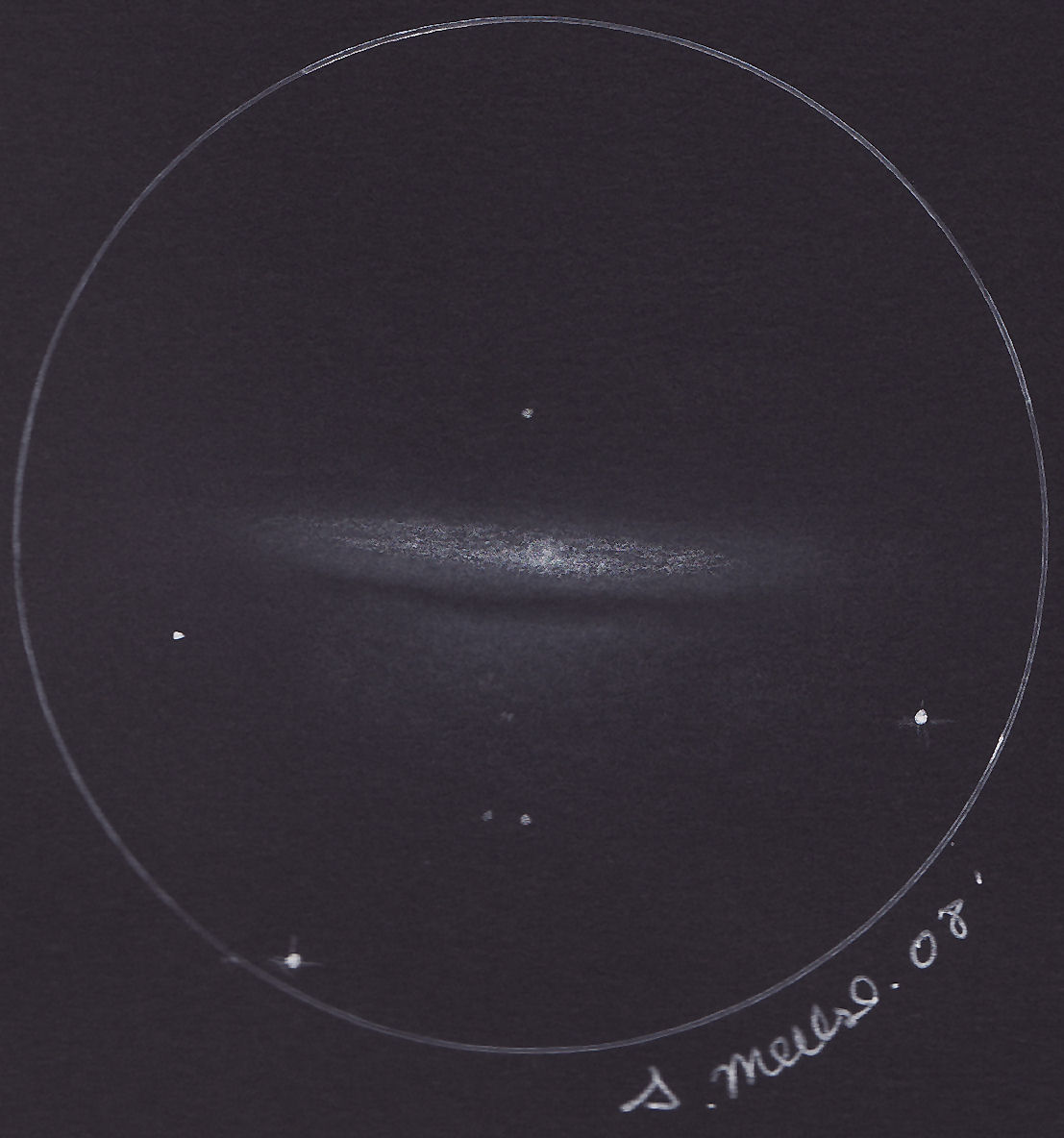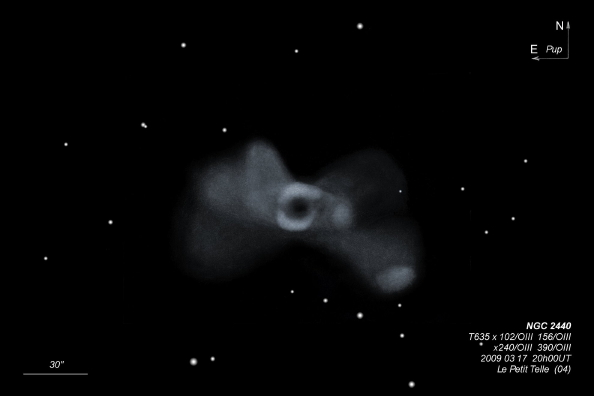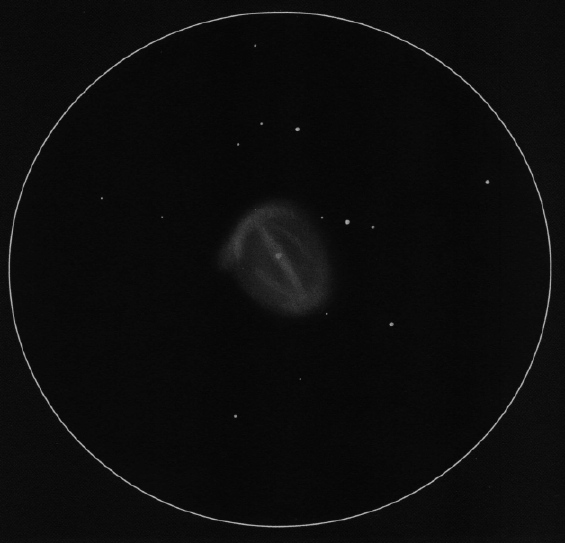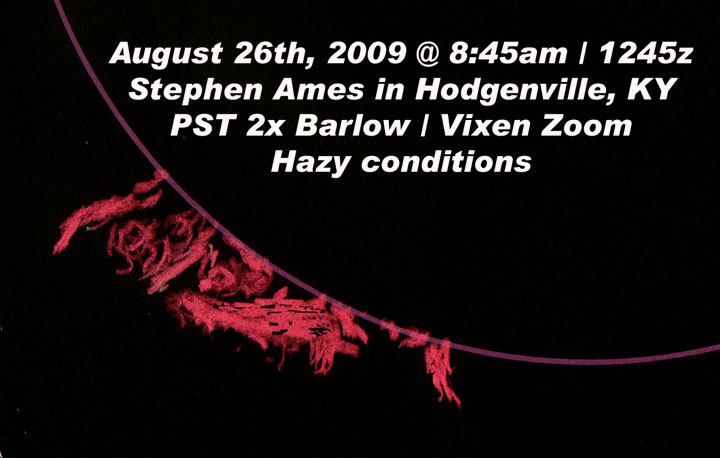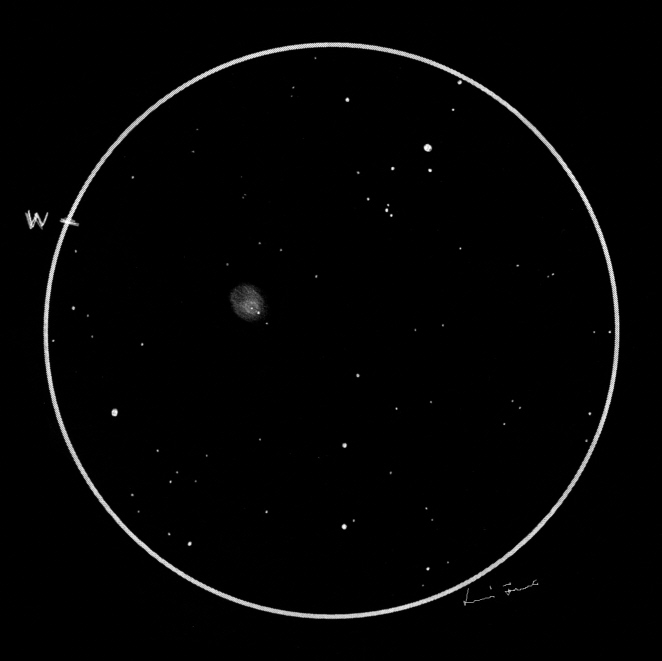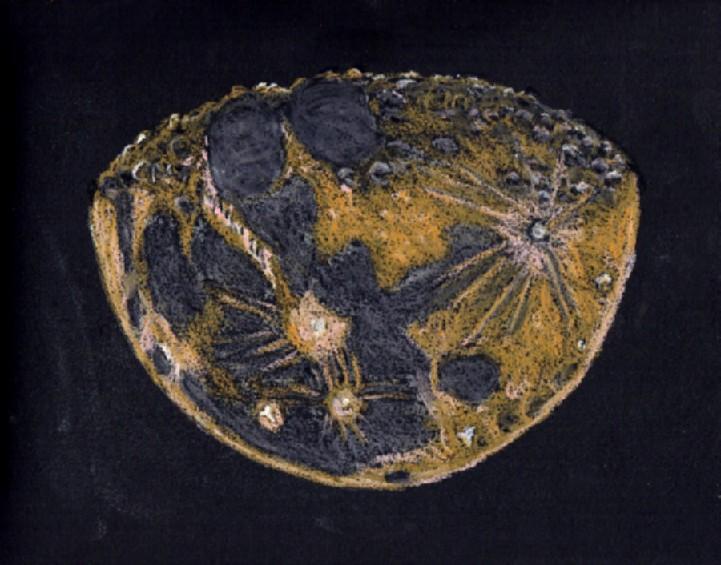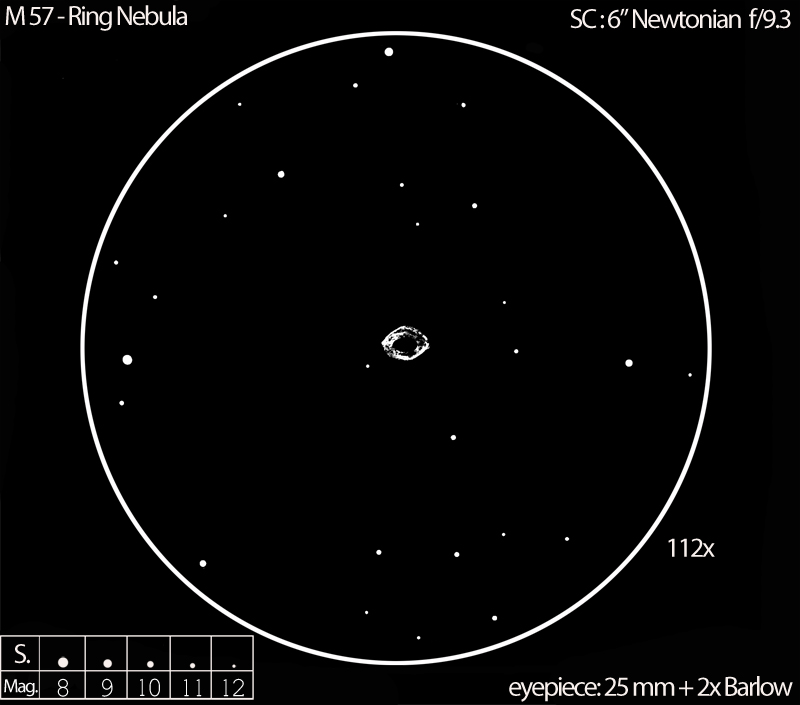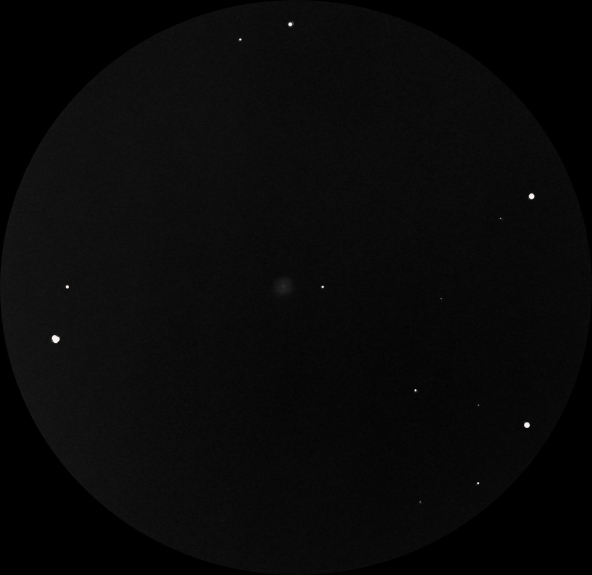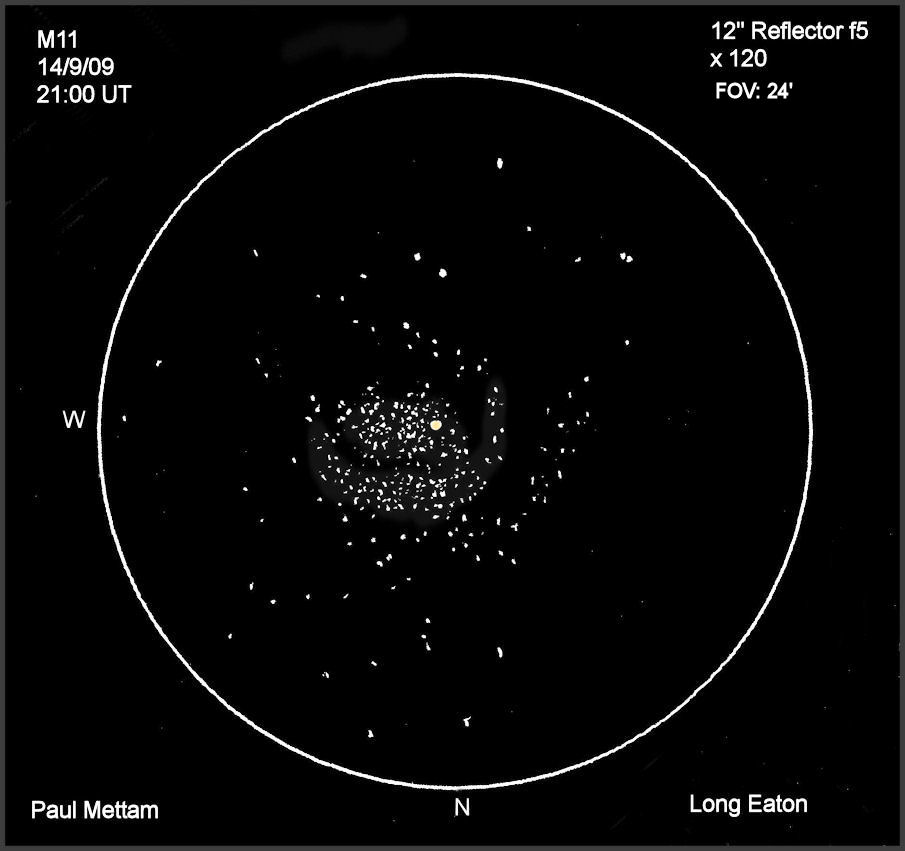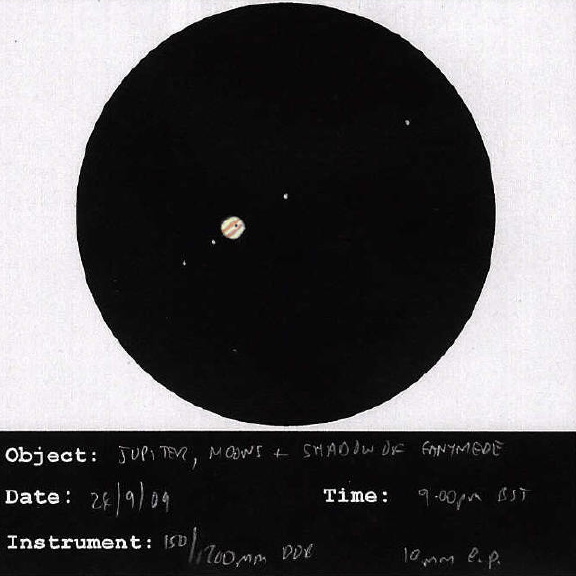
Jupiter with Ganymedes’ shadow and moons Europa, Ganymede, Io, Callisto
Sketch and Details by Peter Mayhew
* Object Name: Jupiter with Ganymede’s shadow: moons left to right
are Europa, Ganymede, Io, Callisto
* Object Type: Planet, moons
* Location: York, UK
* Date: 24th September 2009, 20:00 UT
I made a graphite pencil sketch on a white paper template at the
eyepiece, and also noted colours then. Later I scanned this and used
editing software to make the image a negative and then added colour.
The view was as seen through my Skywatcher Skyliner-150mm Dobsonian (f8)
with a 10mm eyepiece, giving x120 magnification and 26′ field of view.
The seeing was pretty wobbly at first but settled. Over about an hour
the shadow of Ganymede traversed from right of centre to left of centre.
I felt very lucky to see this as there was 100% cloud at 19:00 UT and
cloud obscured the view again at 22:00 UT, meaning that clear skies were
only present during the shadow transit. I was surprised at how visible
the shadow was, even at low power with a 25mm eyepiece.
Peter Mayhew
